Boston Photo Gallery
Several example are presented below of the types of visibility days that tend to occur in Boston. These include clear days, "hazy" polluted days, "brown cloud" polluted days, and naturally-impaired days, such as those with heavy fog or thick clouds.
For each picture, fine particle (PM2.5) concentrations and relative humidity (RH) levels are provided for reference. These variables tend to have the biggest affect on visibility.
Click on a picture to view a larger version.
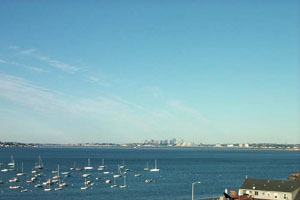 |
Clear Day
July 11, 1999 |
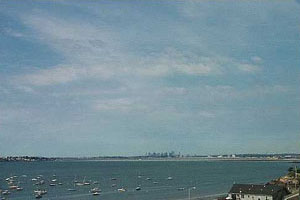 |
Clear Day
June 16, 1999
This is a typical clean, clear day in Boston. Note the crispness of the features on the horizon. These days will have low pollution levels and low humidity.
PM2.5 = 4.8 μg/m3
RH = 19%
|
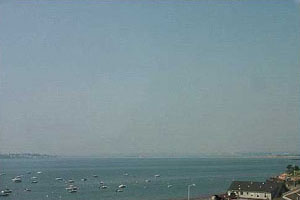 |
Hazy Poluted Day
June 7, 1999
This is a typical hazy polluted day in Boston. Note the relatively uniform white haze that obscures the horizon. The haze tends to diminish slightly at higher elevations. These events tend to occur on hot and humid summer days and are affiliated with high ozone, PM2.5, and RH levels.
PM2.5 = 16.7 μg/m3
RH=45%
|
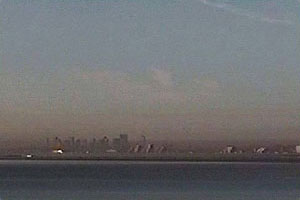 |
Brown Cloud Polluted Day
January 21, 1999
This is a typical "brown cloud" polluted day in Boston. Note how the brown cloud appears to envelop the city but quickly thins out at higher elevations. These events tend to occur on calm winter mornings during rush hour traffic. PM2.5 and black carbon levels may be high; ozone will be low; RH may vary.
PM2.5 = 40+ μg/m3
RH=69%
|
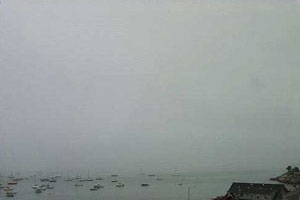 |
Foggy Day
June 13, 1999
This is an example of a foggy day in Boston. It appears similar to a hazy polluted day, but note how the fog tends to be more grey than the white haze and how it does not thin out near the top of the picture. Fog is most common in the fall and spring. RH will be very high; ozone will be low; PM2.5 may be moderate or high since the fog may trap local pollutants.
PM2.5 = 15 μg/m3
RH = 98%
|